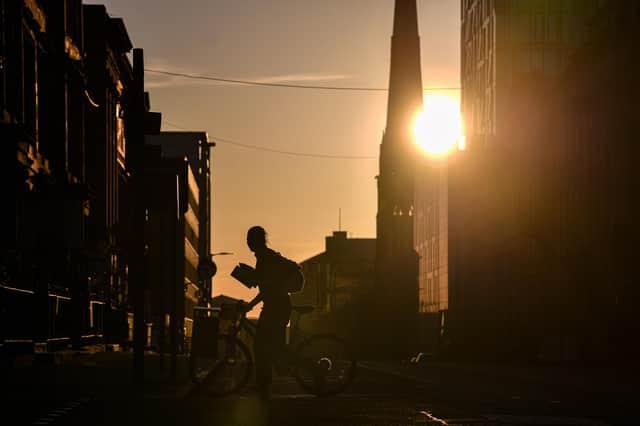In the bleak midwinter, there is still magic to be found – Laura Waddell


At 3pm, there is only one hour of good, solid daylight left before the sky starts dimming rapidly, some inconsiderate giant’s hand on the big light switch.
Depressives and the innately melancholy battle to stave off the gloom, while sufferers of seasonal affective disorder turn their faces toward the bright light of SAD lamps.
Advertisement
Hide AdAdvertisement
Hide AdIn this post-Covid timeline, things are only partially back to normal, still semi in stasis. So, after so long knocked off course, craving the everyday energy and motion of the before times, the darker nights of Greenwich mean time feel disconcertingly like everything is grinding to a halt again.
In a previous column, I once floated the idea of night parks. Instead of locking the gates at night, parks in this beautiful country that is dark and cold near half the year would be well lit and inviting all throughout the winter, festive and friendly, perhaps with little refreshments stalls, encouraging individual walkers and whole families to get some fresh air in a safe public place after dark.
More effort to make Scotland’s outdoor spaces hospitable during winter would benefit us all, but particularly those without gardens of their own, one of the great inequalities lit up by Covid.
Some readers took umbrage with my unintentional implication that it wasn’t safe or possible to go out walking in the evening, and some women pointed out that in fact they make a real effort to reclaim the streets at this and every time of year.
I find their attitude inspiring, but I don’t feel that way myself. Safety concerns aside, when I’m in a depressive dip, it can be hard enough to roll myself out of bed before midday. Within a couple of hours, if I haven’t gotten outside yet, I feel like the window is closing, and I’m in a new lockdown, this one imposed by the darker nights.
Still, I try my hardest to do what I can to stave off the dread. I take my antidepressants and see my therapist. I vow to wake up earlier, to maximise daylight hours. I turn on lamps and scuttle beneath them. This week I’ve gotten out for a walk every day, willing the mild exercise to lift my mood, knowing how it also untangles thoughts that have clumped together and shrugs off the claustrophobic sensation of inertia.
Winter, at its best, is filled with light and warmth. An ideal winter’s day might be spent out walking in the crisp, chill, blue air before retreating to cocoon at home. It’s the sensory contrast that makes the magic of this time of year.
The hug of woollen scarf and gloves when your nose is cold. Holding a cup of something hot – chocolate or a toddy, your choice – looking onto a dreich day from the inside.
Advertisement
Hide AdAdvertisement
Hide AdAt its bleakest, winter means gritting our teeth – as well as the roads – to bear the cold, damp, dark stretching ahead for months. My survival strategy is trying to find balance – between heat and cold, light and dark, taking what gifts winter gives me.
A message from the Editor:
Thank you for reading this article. We're more reliant on your support than ever as the shift in consumer habits brought about by coronavirus impacts our advertisers.
If you haven't already, please consider supporting our trusted, fact-checked journalism by taking out a digital subscription.
Comments
Want to join the conversation? Please or to comment on this article.

